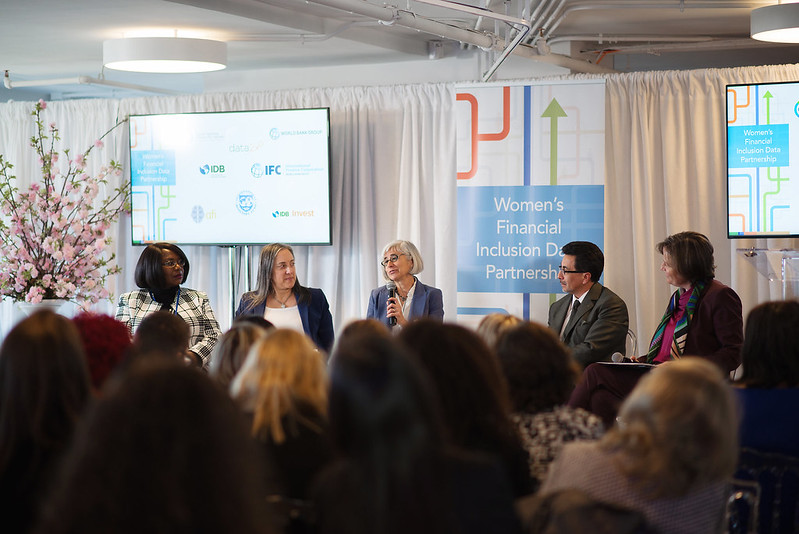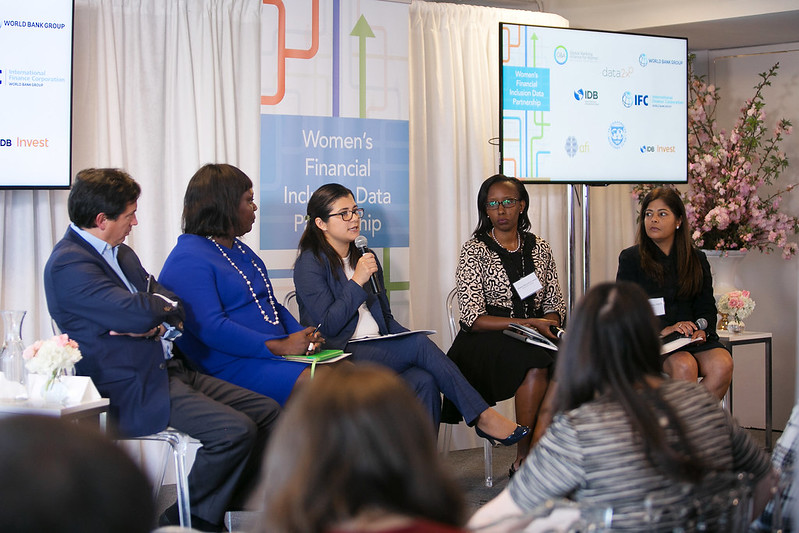“To solve women’s financial exclusion, our starting point should be data.” – Her Majesty Queen Máxima of the Netherlands
On April 19, 2018, alongside the 2018 Spring Meetings of the World Bank and International Monetary Fund, Data2X’s Women’s Financial Inclusion Data Partnership (WFID) hosted a side event, Turning Data into Action for Women’s Financial Inclusion.

This event featured keynote remarks from Her Majesty Queen Máxima of the Netherlands, the United Nations Secretary-General’s Special Advocate for Inclusive Finance for Development, and panels of regulators, financial service providers, and international financial institutions.

Opening with the premiere screening of Data2X’s animated video, Why Gender Data Pays, the discussion highlighted how gender data spurs action on women’s financial inclusion, including concrete national examples of gender data impact and use. WFID also launched its Partnership Principles and the WFID Global Gender Data Strategy during the event.
Notable anecdotes
- “To solve women’s financial exclusion, our starting point should be data. We need demand-side insights into women customers complemented by supply-side insights into women customers, complemented by supply-side insights into financial providers. Progress will come when we address both sides at the same time.” – Her Majesty Queen Máxima of the Netherlands, the United Nations Secretary-General’s Special Advocate for Inclusive Finance for Development.
- In Rwanda, Peace Masozera Uwase, National Bank of Rwanda, cited that data showing that only 12 percent of women had access to formal credit led to the creation of a government-backed guarantee fund to support women business owners.
- A national demand-side survey in Mexico revealed that a program pushing for wages to be deposited in bank accounts supported financial inclusion for men but not for women, because women are less likely to be formally employed, recounted Maria Fernanda Trigo, National Banking and Securities Commission (CNBV). As part of expanding financial access to women, CNBV is designing a mobile product for domestic workers, most of them women, to include insurance and retirement savings accounts.
- Tukiya Kankasa-Mabula, Bank of Zambia, mentioned the important role of central banks in encouraging commercial banks to sex-disaggregate their data and grow the women’s market. For instance, in Zambia, Stanbic Bank was confident that it was serving women clients well but the data showed that women were only 26 percent of clients. As a result, they developed a women’s banking program that includes mentoring, training, and networking for women clients.

Caren Grown, Senior Director, Gender, World Bank Group, answers a quesion during the first panel discussion. 
Maria Fernanda Trigo, Director General, Comisión Nacional Bancaria y de Valores, Mexico, speaks during the second panel discussion. 
Audience members applaud at the conclusion of the event.
